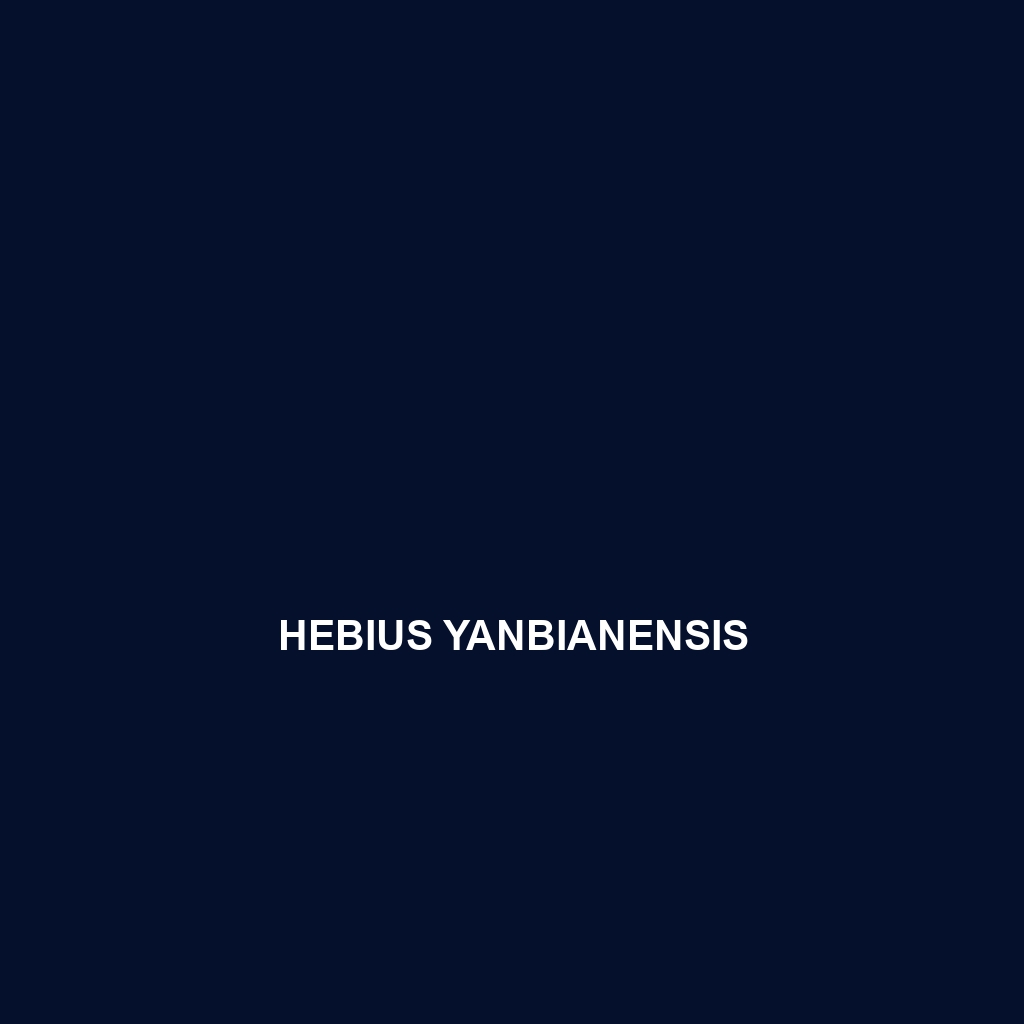Common Name
Hebius yanbianensis
Scientific Name
Hebius yanbianensis
Habitat
Hebius yanbianensis is primarily found in the temperate forests of northeastern China, particularly in the Yanbian Korean Autonomous Prefecture. This region is characterized by its diverse ecosystems, which include lush green valleys, dense undergrowth, and occasional clearings. The habitat comprises a mix of wetlands, mountainous areas, and riverbanks, providing a rich array of environmental conditions tailored to the survival of this species. The climate is generally classified as temperate, with cold winters and warm summers that support a thriving biodiversity. Hebius yanbianensis is commonly associated with leaf litter and moist environments, where it can find ample cover and humidity.
Physical Characteristics
In terms of physical appearance, Hebius yanbianensis exhibits a slender, elongated body, typical of many snakes in its family. Adult specimens typically measure between 70 to 100 centimeters in length, making them relatively small compared to other snakes. The coloration is generally a mix of dark brown to olive green, interspersed with lighter stripes or blotches down its back, which provides excellent camouflage against the forest floor. The scales are smooth, and the head is distinctively tapered, with bright, large eyes that aid in its nocturnal activities. These distinctive physical traits make Hebius yanbianensis easily identifiable among its relatives in the region.
Behavior
Hebius yanbianensis is primarily a nocturnal species, emerging to hunt and forage under the cover of darkness. This behavioral adaptation helps evade predators and increases hunting success for prey. During the day, these snakes can often be found coiled among leaf litter or hidden beneath rocks and fallen logs. Hebius yanbianensis exhibits solitary behavior, only coming together during the mating season, which typically occurs in the late spring to early summer. Their courtship rituals involve intricate movements and displays to attract potential mates, often leading to elaborate dances that showcase their agility and vibrant colors.
Diet
In terms of dietary habits, Hebius yanbianensis is primarily carnivorous and feeds on a variety of small mammals, birds, and amphibians. Their diet also includes insects and other invertebrates, showcasing their adaptability as opportunistic feeders. The hunting strategy revolves around stealth and ambush; they rely on speed and quick reflexes to capture prey. This adaptable feeding pattern ensures that Hebius yanbianensis can thrive in different conditions, with availability being a critical factor in determining their feeding frequency.
Reproduction
The reproductive cycle of Hebius yanbianensis is fascinating and follows a seasonal pattern. Mating typically occurs in late spring, after which females will lay clutches of eggs in safe, warm locations such as decaying vegetation or soft soil. The gestation period lasts about 6 to 8 weeks, after which hatchlings emerge fully developed, typically numbering 4 to 10 per clutch. Parental care is minimal; however, the mother may remain nearby to protect the nest from potential predators. Upon hatching, young snakes are independent and begin foraging for food almost immediately.
Conservation Status
Currently, Hebius yanbianensis is classified as a species of ‘Least Concern’ according to the IUCN Red List. However, habitat loss due to urban expansion and agricultural activities poses a significant threat to its populations. Conservation efforts are essential to monitor its habitats and ensure that the ecological balance in the regions where it thrives is maintained. Awareness programs and habitat conservation initiatives are being implemented in certain areas to mitigate these impacts and protect the biodiversity of the region.
Interesting Facts
One of the most intriguing aspects of Hebius yanbianensis is its unique method of hunting, which can include an elaborate display of its agility and coloration to distract prey. Furthermore, this snake can often change its coloration slightly based on environmental conditions, which helps further its camouflage abilities. Additionally, local folklore often highlights the role of Hebius yanbianensis as a symbol of good luck among communities in northeastern China, linking cultural significance with ecological value.
Role in Ecosystem
Hebius yanbianensis plays a crucial role in its ecosystem as both a predator and prey. It helps to control the populations of various small mammals and insects, ensuring a balanced food web. Furthermore, as a prey species for larger birds of prey and some mammalian carnivores, it contributes to the nutrient cycle within its habitat. Its presence is an indicator of a healthy, functioning ecosystem, reinforcing the need for ongoing conservation efforts to maintain biodiversity in the regions it inhabits.
